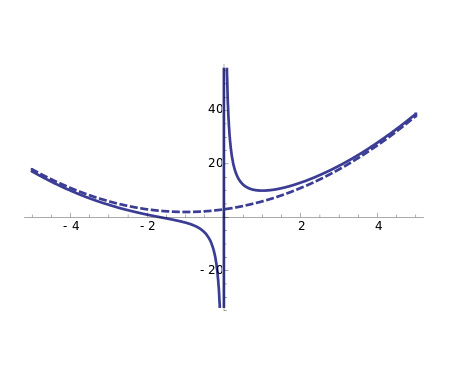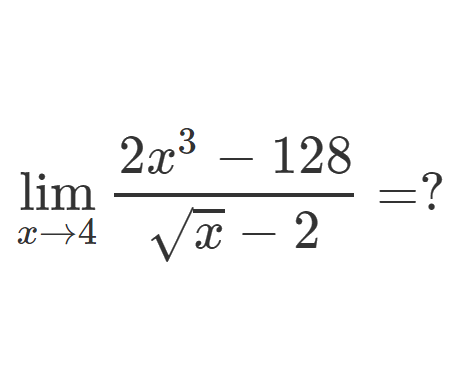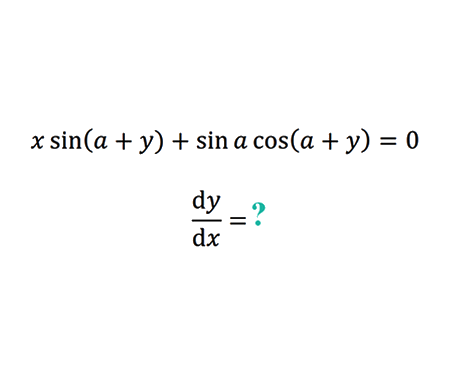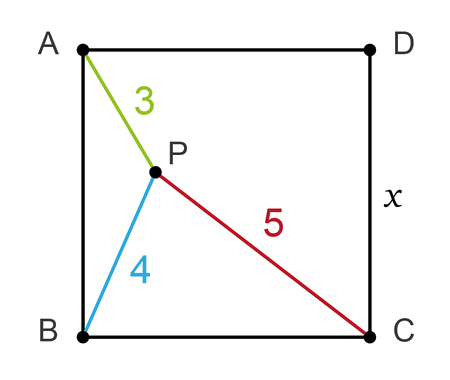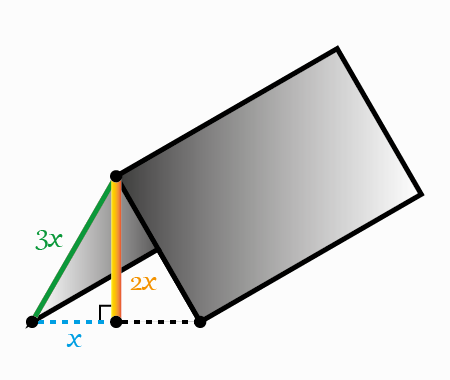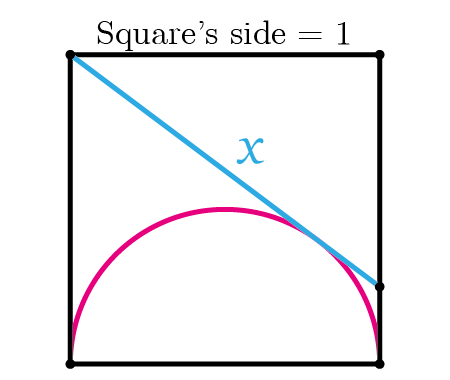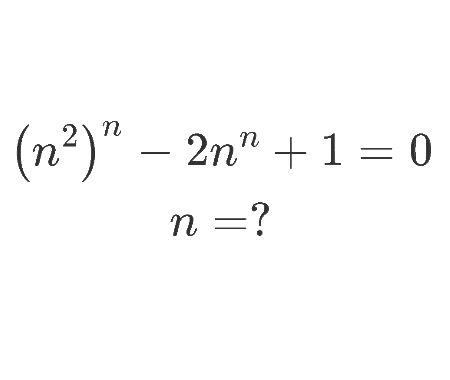Determine the length \(x\) of the blue segment
Home -> Solved problems -> We have two squares, determine the value of x

Solution
In this problem we explore a geometric-algebra challenge: two nested squares and a segment of length \(x\) to determine.
The solution uses triangle similarity and algebraic reasoning to find the value of \(x\).
Follow the clear, step-by-step explanation to understand how geometry and algebra combine to yield the result.
Let’s add sections like it’s shown in the next figure

We have two squares \(\square A B C D \) and \(\square M N G F \)
\[\begin{gathered}
A B \| D C\\\\
and\\\\
E B \| F G\\\\
\angle a=\angle c\\\\
Also\\\\ \triangle B A E \\\\and\\\\ \triangle F C G\\\\ are\; Right\; Triangles.\\\\
\triangle B A E \sim \Delta F C G \\\\
\frac{A B}{C F}=\frac{A E}{C G} \\\\
\frac{7}{4}=\frac{x}{C G} \\\\
C G=\frac{4 x}{7}
\end{gathered}
\]
\[\begin{gathered}
\Delta F C G \;is\; a\; Right \;Triangle\\\\
By\;Pythagoras\;theorem\\\\
F G^{2}=C F^{2}+C G^{2}\\\\
F G=\sqrt{4^{2}+\left(\frac{4 x}{7}\right)^{2}}\\\\
F G=\sqrt{16+\frac{16 x^{2}}{49}}=N G
\end{gathered}
\]
\[\begin{aligned}
&\text { From } \Delta G F C \\\\
&\qquad \begin{array}{c}
\angle a+\angle F C G+\angle C G F=180^{\circ} \\\\
\text { also } \\\\
\qquad \angle b+\angle N G F+\angle C G F=180^{\circ} \\\\
\angle a=\angle b \\\\
\Delta F C G \sim \Delta G N B \\\\
\frac{C F}{N G}=\frac{G F}{B G} \\\\
\frac{4}{N G}=\frac{G F}{B G} \\\\
B G=\frac{1}{4}\left(16+\frac{16 x^{2}}{49}\right)
\end{array}
\end{aligned}
\]
\[\begin{gathered}
B C=B G+G C=7 \\\\
4+\frac{4 x^{2}}{49}+\frac{4 x}{7}=7 \\\\
\frac{4 x^{2}}{49}+\frac{4 x}{7}-3=0 \\\\
4 x^{2}+28 x-147=0 \\\\
x=\frac{-28 \pm \sqrt{28^{2}-4 (4) (-147)}}{2 (4)} \\\\
x=\frac{7}{2}\; \text { or }\; x=-\frac{21}{2} \\\\
\huge x=\frac{7}{2}
\end{gathered}\]
By applying triangle similarity and the Pythagorean theorem, we derived a quadratic equation whose meaningful solution gives the correct value of \(x\).
This problem illustrates how combining geometric insight with algebraic techniques can lead to elegant solutions.
For more visual and algebraic problems like this, explore our Solved Exercises section on Art Of Mathematics.
Home -> Solved problems -> We have two squares, determine the value of x
Every problem you tackle makes you smarter.
↓ Scroll down for more maths problems↓
Prove that the function \(f(x)=\frac{x^{3}+2 x^{2}+3 x+4}{x}
\) has a curvilinear asymptote \(y=x^{2}+2 x+3\)
Why does the number \(98\) disappear when writing the decimal expansion of \(\frac{1}{9801}\) ?
if we draw an infinite number of circles packed in a square using the method shown below, will the sum of circles areas approach the square's area?














